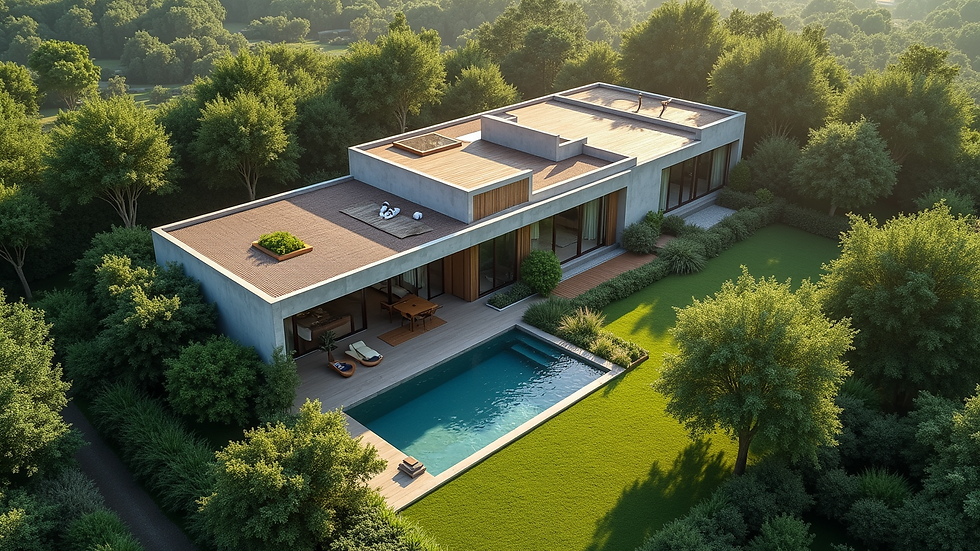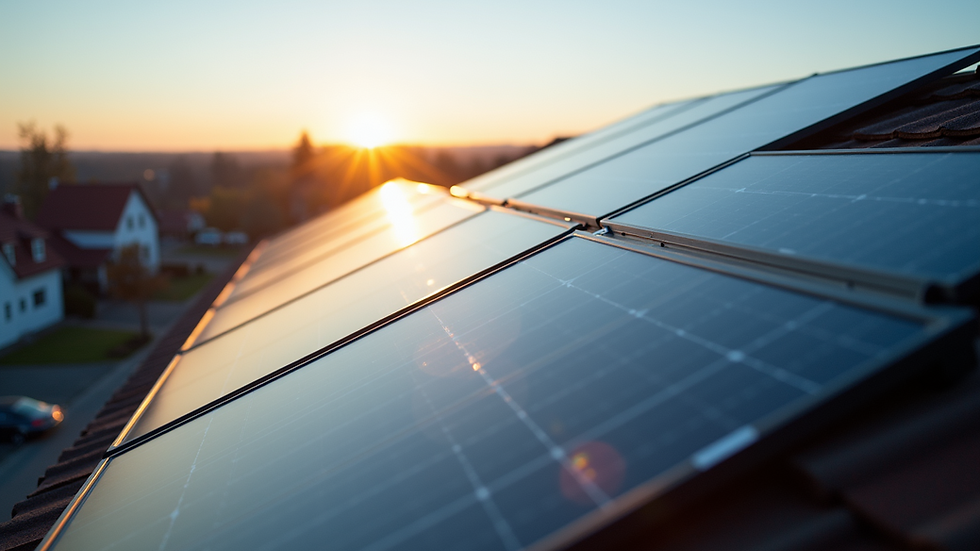Building Energy-Efficient Homes for a Greener Future
- l5dev1984
- Jul 21
- 4 min read
In recent years, the urgent need for sustainable living has led many to consider the impact of traditional home building methods. As environmental concerns grow, the emphasis on energy-efficient homes has become increasingly vital. Not only do these homes promote a greener future, but they also offer a host of benefits, including lower utility bills and enhanced comfort. This post delves into the essentials of eco-saving home building, the technologies and materials involved, and the challenges that come with it.
Eco-Saving Home Building: A Step Towards Sustainability
Eco-saving home building focuses on creating structures that minimize their environmental footprint. This approach involves using sustainable materials, optimizing energy consumption, and incorporating renewable energy sources. Builders typically aim to reduce the overall impact on the environment while increasing energy efficiency.
One popular method in eco-friendly construction is the use of renewable materials like bamboo, reclaimed wood, and recycled metals. These materials not only help in reducing waste but also lower the energy required in production. For instance, bamboo grows rapidly and can be harvested without causing significant harm to ecosystems.
Also, using energy-efficient appliances and fixtures can significantly reduce energy consumption. For example, Energy Star-rated appliances are designed to use less energy than standard models. By incorporating these elements, homeowners can dramatically lower their carbon footprint and contribute to a healthier planet.

The Role of Insulation and Air Sealing in Energy Efficiency
A well-insulated home is essential for maintaining energy efficiency. Proper insulation reduces heat loss in winter and keeps homes cool during summer, which in turn minimizes the need for heating and cooling. Insulation materials like cellulose, recycled denim, or foam boards help create barriers that control temperature.
Air sealing is another critical aspect of energy-efficient home construction. Windows, doors, and other openings should be effectively sealed to prevent drafts and air leaks. Techniques such as caulking, weather stripping, and using energy-efficient windows play a significant role in enhancing ventilation without losing energy.
According to the U.S. Department of Energy, adequate insulation and sealing can reduce energy costs by up to 30%. This translates to significant savings on utility bills and a reduced carbon footprint.

What are the disadvantages of energy-efficient buildings?
While energy-efficient homes present numerous benefits, they are not without their challenges. Here are a few disadvantages to consider:
Higher Initial Costs: One of the main drawbacks is the often higher upfront costs associated with building energy-efficient homes. Sustainable materials, advanced technology, and solar panels may require a larger investment initially. However, these costs can be offset over time through savings on energy bills and potential tax credits.
Complex Construction: Constructing an energy-efficient home may involve more complex building practices than traditional homes. This complexity can lead to longer construction times and require builders who are specifically skilled in sustainable practices.
Limited Design Flexibility: Sometimes, energy-efficient materials or designs can restrict architectural choices. Certain construction methods may limit the layout or aesthetic appeal of a home, which could be a concern for some homeowners.
Despite these challenges, the long-term benefits of energy-efficient homes often outweigh the short-term disadvantages. The push for greener living is continuing to evolve, making it easier to embrace eco-friendly practices in home building.
Renewable Energy Sources: Powering the Future
Integrating renewable energy sources is a pivotal aspect of energy-efficient home building. Homeowners can harness solar, wind, or geothermal energy, significantly reducing reliance on non-renewable resources. Among these, solar panels are particularly popular due to their ability to generate electricity effectively.
Many homes today are opting for solar energy installation, taking advantage of tax incentives and financing options available for green energy initiatives. Additionally, advancements in solar battery technology now allow homeowners to store solar energy for use during nighttime, further elevating energy independence.
For instance, a solar panel system can cover a large portion of a home's energy needs, leading to substantial savings. According to the Solar Energy Industries Association, the cost of solar energy systems has decreased by about 82% since 2010, making it more accessible than ever.

Practical Steps Towards Building an Energy-Efficient Home
If you are considering building an energy-efficient home, here are some practical steps to get started:
Choose the Right Location: The placement of a home can significantly influence its energy efficiency. Opt for a location that receives ample natural light, which can reduce the need for artificial lighting and heating.
Incorporate Passive Design Principles: Passive design techniques utilize natural resources to maintain comfortable living conditions. For example, orienting windows to capture sunlight during winter can decrease heating costs.
Select Sustainable Materials: As mentioned earlier, using materials that are renewable, recycled, or locally sourced helps minimize environmental impact. Research available options and prioritize sustainability.
Invest in Energy-Efficient Systems: When selecting appliances, heating, and cooling systems, always prioritize energy efficiency ratings. Look for certifications like Energy Star that help guide your choices.
Consult Professionals: Engaging with architects and builders who specialize in sustainable construction can provide invaluable insights. They can help navigate the complexities of eco-saving home building and suggest optimal techniques and materials.
By implementing these steps, you can significantly contribute to building a greener future while also enjoying a comfortable living space where energy costs are minimized.
Embracing the Future of Home Building
As the world moves toward a more sustainable future, building energy-efficient homes will be at the forefront of this transformation. The combination of modern technology, innovative design, and eco-friendly materials can create homes that not only benefit the planet but also improve our quality of life. Through informed choices and proactive steps, anyone can join the movement towards eco-saving home building.
Transitioning to energy-efficient practices is not merely a trend: it is a necessary step toward a sustainable existence. By prioritizing energy efficiency, we are ensuring a cleaner, greener future for generations to come. Embrace the change and be part of the solution in constructing a better world.
For those interested in understanding more about energy-efficient home construction, numerous resources and organizations focus on sustainable building practices. Make your contribution today – the planet will thank you for it!



コメント